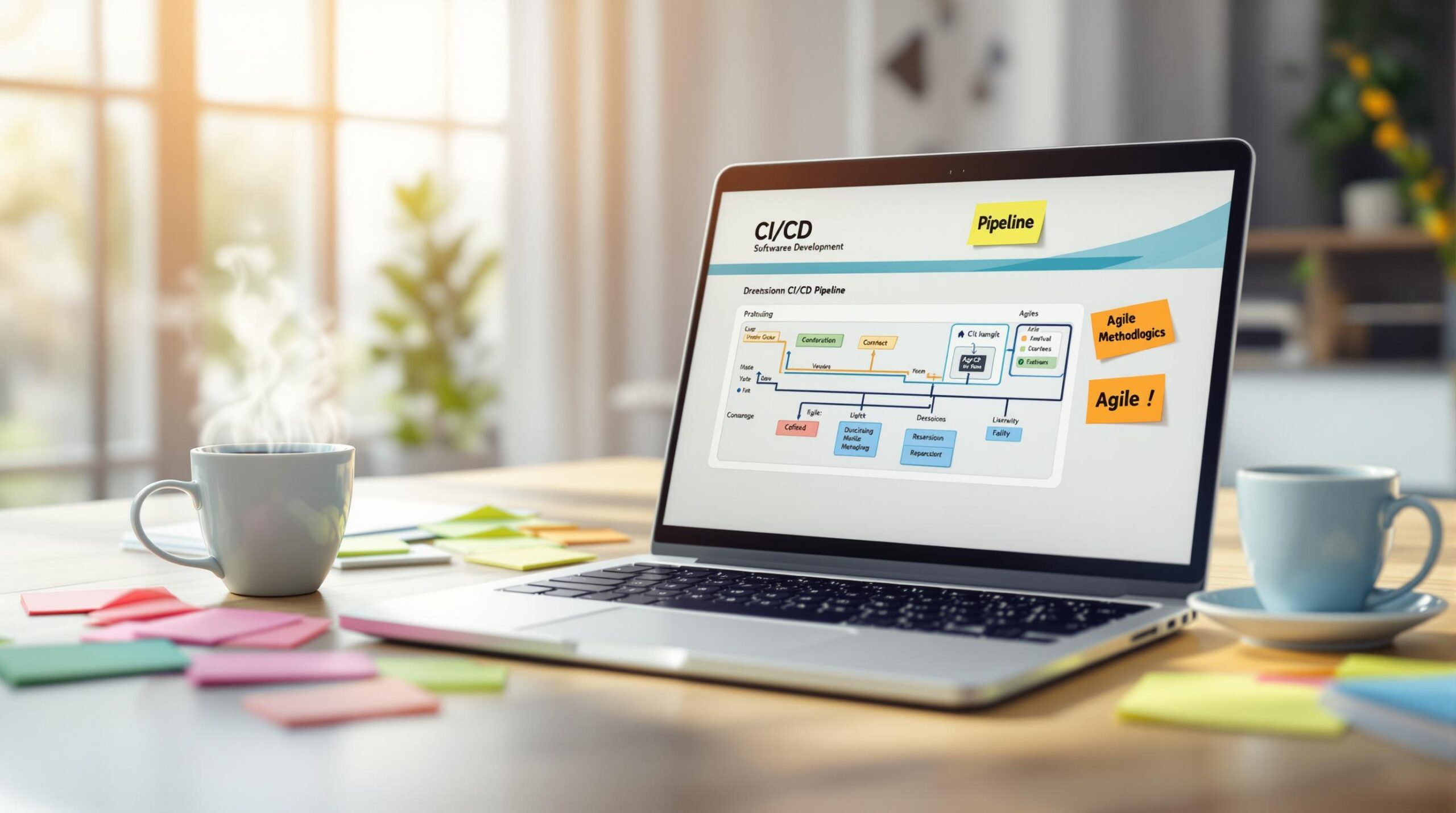Want to land your dream job using LinkedIn? This guide shows you how to build a standout profile, grow your network, and leverage LinkedIn’s tools for job hunting. Here’s what you’ll learn:
- Polish Your Profile: Use a professional photo, craft a clear headline, and highlight your skills, projects, and certifications.
- Expand Your Network: Connect with classmates, alumni, and industry professionals. Join groups and engage with posts to build meaningful relationships.
- Find Jobs Easily: Set up job alerts, use advanced search filters, and research companies to discover the best opportunities.
- Skill Up with LinkedIn Learning: Take free or discounted courses to gain in-demand skills and showcase certifications on your profile.
Start today to create a professional presence, connect with the right people, and unlock job opportunities.
How to Build a Strong LinkedIn Profile
Your LinkedIn profile is a key tool in your job search – it’s often the first thing recruiters and industry professionals see. With 94% of recruiters using LinkedIn to find candidates, making your profile stand out is crucial.
Use a Professional Profile Picture
Your photo is the first visual impression you make. Choose a high-resolution headshot with these qualities:
- A clear, well-lit face against a simple background
- Business-casual attire that fits your industry
- A centered composition with no distractions
- A natural, approachable smile
No professional headshot? Check if your college’s career center offers free photo sessions for students.
Write a Clear and Focused Headline
Your headline is limited to 220 characters, so make every word count. Combine your desired role, key skills, and a highlight of your experience. For example:
- "Computer Science Student | Python & Java Developer | Built Machine Learning Models Using TensorFlow"
- "Marketing Student | Social Media Strategist | Increased Club Membership by 200 Students Through Targeted Campaigns"
Write a Summary That Stands Out
Your summary is where you can showcase your skills and experience in a more personal way. For example:
"As a third-year computer science student, I specialize in Python and Java development, with a focus on machine learning. My recent internship enhanced my skills in collaborative problem-solving and applying data analysis to real-world challenges."
Stick to 3-5 short paragraphs and include relevant keywords from your industry.
Add Skills and Projects to Your Profile
Highlight skills that align with your career goals:
- Technical Skills: Programming languages, software, and tools
- Soft Skills: Teamwork, communication, problem-solving
- Industry-Specific Skills: Data analysis, digital marketing, project management
For projects, focus on those that demonstrate your abilities:
- Class projects with practical applications
- Personal coding projects (include GitHub links)
- Research work that showcases analytical skills
Include Education and Certifications
The education section should provide a full picture of your academic background. Include:
- Your degree program and expected graduation date
- Relevant coursework, honors, and academic achievements tied to your career goals
- Leadership roles in student organizations
- Certifications from platforms like LinkedIn Learning or Udemy
Once your profile is polished, start building your network by connecting with professionals in your field. A strong profile combined with meaningful connections can open doors to exciting opportunities.
How to Grow Your LinkedIn Network
Networking matters – a lot. In fact, 85% of jobs are filled through networking [1]. Building strong connections on LinkedIn can help you tap into hidden job opportunities and secure valuable referrals.
Start with People You Already Know
Your academic and professional circles are a great starting point. Reach out to:
- Classmates: Connect with current and former classmates from your courses.
- Professors and TAs: They know your work and can be valuable contacts.
- Alumni: Use LinkedIn’s Alumni Tool to find graduates from your school working in your target industry or company.
Filter alumni by location, industry, or job title to zero in on the most relevant connections.
Join Groups and Get Involved
LinkedIn Groups are perfect for meeting like-minded professionals and showcasing your expertise. Here’s how to make the most of them:
- Join groups related to your career interests.
- Share useful articles or insights to contribute meaningfully.
- Ask thoughtful questions to spark conversations.
- Engage with posts by offering helpful responses.
- Connect with active members who align with your goals.
Active participation in groups helps you stand out and build meaningful relationships.
Engage with Industry Leaders
Interacting with leaders in your field not only increases your visibility but also keeps you informed about industry trends. To make an impact:
- Leave thoughtful comments on their posts.
- Share their content, adding your own perspective.
- Ask insightful questions to show your knowledge.
- Like and engage with relevant discussions.
As your network grows, you’ll gain access to more opportunities, including job postings and referrals, through LinkedIn’s powerful search tools.
How to Use LinkedIn’s Job Search Features
Once you’ve built a strong network, LinkedIn’s job search tools can help you take the next step in your career. These tools are designed to make your job search more efficient and targeted.
Set Up Job Alerts for Opportunities
Head over to the ‘Jobs’ tab to set up alerts tailored to your preferences. You can customize these alerts based on:
- Job title (e.g., software engineer, QA tester)
- Location preferences
- Experience level (e.g., entry-level, 0-2 years)
- Industry focus
- Company size
- Job type (e.g., full-time, internship)
Feel free to create multiple alerts with different criteria. For example, you might set one alert for local software engineering internships and another for remote entry-level developer roles. Once your alerts are in place, use LinkedIn’s filters to fine-tune your search.
Use Filters to Narrow Job Searches
LinkedIn offers filters to help you narrow down your options. These include experience level, job type, location, and industry.
Tip: Adjust your search radius based on your willingness to relocate. If you’re open to moving, expand your geographic range or include "remote" roles in your search.
After filtering, take the time to research potential employers to ensure they align with your career goals.
Research Companies and Job Roles
LinkedIn’s company pages are a goldmine for learning about potential employers. You can explore details like company culture, recent achievements, and employee reviews.
Check out the company’s posts and updates. Businesses that actively share updates and engage with their audience often have a more dynamic work environment and better growth prospects.
Here are some key factors to consider:
- Skills and qualifications they prioritize
- Team structure and reporting lines
- Potential for career growth
- Benefits and perks offered
"Following industry leaders and participating in relevant groups can increase your visibility and chances of finding job opportunities" [4][1].
sbb-itb-f454395
How to Reach Out to Professionals on LinkedIn
Building connections on LinkedIn can open doors, especially for students stepping into the job market. To make the most of your outreach, focus on crafting thoughtful, personalized messages that stand out.
Reaching Out to Professionals and Alumni
When sending a connection request, make it personal and show that you’ve done your homework. Include an introduction, some context, and a clear reason for reaching out. Here’s an example of what works:
"Hi [Name], I’m [Your Name], a Computer Science student at [University]. I came across your profile while researching software development roles at [Company], and your work on [specific project/article] caught my attention. Would you be open to a brief conversation about your experience in the field?"
If you’re connecting with alumni, use your shared educational background to create an instant connection. For example:
"Hi [Name], I found your profile through our university’s alumni network. I’m interested in your transition from [University] to [Company] as a software developer. Would you be open to sharing insights about breaking into the industry?" [2]
Ask for Informational Interviews
Informational interviews are a great way to learn about roles, industries, and career paths. Keep your message short and polite, mention that you’ll only need 15-20 minutes, and come prepared with thoughtful questions. After the chat, send a thank-you note and stay in touch by engaging with their LinkedIn posts or updates.
Using LinkedIn Learning to Gain Skills

LinkedIn Learning is a great resource for students looking to build skills that boost their job prospects. With thousands of courses available, it covers a wide range of technical and soft skills that are highly sought after by employers.
Find Free or Discounted Courses
Did you know that many universities and libraries offer free access to LinkedIn Learning? This means students can explore thousands of courses at no cost. The platform features learning paths like Become a Software Developer, which dives into key programming languages and frameworks. Popular courses include programming basics, Python tutorials, and even tips for writing tech-focused resumes – some with audiences in the hundreds of thousands.
Add Certifications to Your Profile
Completing LinkedIn Learning courses? Don’t forget to showcase those certifications on your profile to grab recruiters’ attention. Here’s how to make the most of them:
- Focus on courses that match your career goals and the skills your industry values.
- Add certifications to the "Licenses & Certifications" section of your LinkedIn profile. Highlight the most relevant ones in your summary for extra visibility.
These certifications show employers you’re serious about growing professionally and prove your expertise in specific areas. Using LinkedIn Learning strategically can help you develop the skills recruiters are hunting for, while also boosting your profile and job search efforts.
Conclusion: Start Using LinkedIn Today
LinkedIn is a powerful tool for students ready to kickstart their careers. Think of your LinkedIn profile as your online professional identity – it needs to stay current and make an impression.
Here are three key ways to make the most of LinkedIn:
- Polish Your Profile: Highlight your skills, projects, and academic accomplishments. Use industry-relevant keywords to help recruiters find you [1][3].
- Build Genuine Connections: Focus on connecting with classmates, professors, and professionals in your field. It’s about quality over quantity when it comes to networking [1][5].
- Engage With Purpose: Share your thoughts, comment on posts, and join discussions in your industry. This helps you stand out and demonstrate your knowledge [1][6].
Consistency is key on LinkedIn. By following these steps – shaping your profile, networking thoughtfully, and engaging actively – you can create a professional presence that sets you apart and helps you achieve your career goals.
FAQs
What should a student put on LinkedIn?
Creating a standout LinkedIn profile as a student involves focusing on a few key areas to make a great impression on potential employers. Here’s what to include:
Professional Photo: Use a clear, high-quality headshot that looks professional. This is often the first thing people notice [1].
Education Details: Share your current degree, expected graduation date, and any relevant coursework or academic achievements. Don’t forget to mention study abroad programs or unique learning experiences [2].
Skills and Endorsements: Highlight your skills and ask for endorsements from peers, professors, or internship supervisors who can vouch for your abilities [1].
Projects and Experience: Showcase academic projects, internships, volunteer work, or leadership roles that demonstrate your strengths and interests.
Summary: Craft a short, engaging summary that reflects your goals and what you bring to the table.
Engagement: Show your enthusiasm for your field by:
- Sharing articles related to your area of interest
- Commenting on posts from professionals or thought leaders
- Joining and participating in professional groups
- Posting insights or takeaways from your studies or experiences
Related Blog Posts
- The Future of Work: How AI and Automation Are Reshaping Career Opportunities in 2025
- Why Companies Reject Students with Backlogs (and How to Still Get Placed)
- Campus Placement Failures? 5 Off-Campus Job Search Strategies for Engineering Graduates
- Internships for Freshers: How to Find Paid Opportunities and Boost Your Resume





